- Register
- Log in to Tune-In
- Wishlist (0)
-
Shopping cart
(0)
You have no items in your shopping cart.
Beatles News

Leslie Cavendish was the Beatles' hairdresser for nine years at the height of their fame
Fifty years on he can still vividly remember the moment his life changed for ever.
It was an ordinary Saturday in October 1966 and Leslie had just finished styling actress Jane Asher’s hair at the Vidal Sassoon salon in London where he worked.
As he removed the gown from her shoulders she asked whether Leslie was free later that day to do a house visit “as my boyfriend needs a haircut”.
Her boyfriend was of course McCartney.
Source: Sadie Nicholas
details
“The masses will catch up with us in 2020.” – John Lennon
A little over 50 years ago, on Nov. 9, 1966 (9/11 in British usage), Paul McCartney was decapitated in a car crash, and was soon replaced, unbeknownst to the public, by a lookalike with equal or better musical abilities, the impostor “Faul” we have lived with till today.
It was a rainy night and after a late session at their Abbey Road studios, ending in an argument amongst the Beatles, Paul got into his Aston Martin and picked up a streetwalker named Rita (of “Lovely Rita” fame) along the way; Rita got excited when she realized who she was with, making Paul lose control.
MI5 , the British intelligence agency, believed that hundreds would commit suicide if the shocking news were revealed, and besides the Beatles were a national treasure bringing in untold revenues. So a man named Billy Shears (or William Campbell), a Scottish lad, was made to fill in, after the requisite plastic surgeries.
This new Beatle, known to the cognoscenti as “Faul,” turned out to be an even better musician than the original Paul. But the Beatles, struck by bad conscience, kept strewing their albums, both aurall details
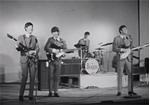
A rare, unreleased demo of The Beatles' "What Goes On"—recorded in 1963 and featuring John Lennon on vocals—has surfaced on on eBay through Parlogram.
Though the song would not be released by The Fab Four until 1965's Rubber Soul, the song actually predates The Beatles. Lennon originally wrote the song all the way back in the late Fifties, for his pre-Beatles group the Quarrymen.
Lennon kept the song around, and—according to Parlogram—even considered recording it with the group as a follow-up to their breakthrough hit, "Please, Please Me," before dropping it in favor of the single's eventual follow-up, "From Me to You."
The song continued to kick around though, and the band eventually recorded it for Rubber Soul with rewritten verses, a solo from George Harrison, and Starr on lead vocals.
The demo—which is currently up for auction—features Lennon on lead vocals and acoustic guitar, with Paul McCartney providing harmonies. You can hear a snippet of it—recorded directly from the acetate—below.
Source: Jackson Maxwell

Ringo Starr's nineteenth studio album goes down like a serving of musical comfort food. Much like a "value meal" at a fast food chain, Give More Love delivers exactly what one expects from it. And it may not linger in the memory for very long following consumption. If you've heard any of Starr's recent releases, including 2015's Postcards from Paradise, there aren't any real surprises. At least not on the ten all-new tracks, each composed by Starr with one of his regular collaborators, that make up the proper album. Though not listed as such on the CD, the four "re-dos" of older songs are apparently bonus tracks (they're also part of the digital edition, just not the vinyl).
Among the ten new cuts, album-opener "We're On the Road Again" is the highlight-a boisterous, uptempo rocker built around a slithering guitar lick by Steve Lukather (of Toto). Paul McCartney provides a fluid bass line and occasionally pipes in with howled backing vocals. McCartney's bass also anchors a melodic ballad, "Show Me the Way." This isn't the Peter Frampton tune, though Frampton shows up elsewhere as co-writer of the vaguely topical "Laughable." Society is "going to hell," Starr warbles, "but not forever" he's quick to assure. The answer to details

Patti Smith will receive the John Lennon Real Love Award at the Theatre Within's 37th Annual John Lennon Tribute, taking place December 1st at Symphony Space in New York City.
During the show, Smith will perform a set comprising her favorite Lennon and Beatles tunes, while an array of artists will also team to cover Sgt. Pepper's Lonely Hearts Club Band in its entirety to celebrate the album's 50th anniversary. Additional performers will be announced on Lennon's birthday, October 9th.
Smith will be the fourth person to receive the John Lennon Real Love Award. Folk-rock legend Donovan earned the honor last year, while the other two recipients are playwright and The Vagina Monologues author Eve Ensler and famed rock photographer Bob Gruen.
Source:Rolling Stone
details
RINGO Starr plans to “perform” at his own funeral.
Ringo Starr plans to ‘perform’ at his funeral
The ex-Beatle wants mourners to sing along to the group’s hits.
The 77-year-old drummer has even put together a tape of tracks.
Ringo said: “The song I’d have at my funeral would be Octopus’s Garden by The Beatles.
“I want to be playing at the service.
“The song I’d have at my funeral would be Octopus’s Garden by The Beatles”
Ringo Starr
“It’d be nice to just have everyone singing along.”
The rock legend recently released his 19th studio album, Give Me Love, and revealed fellow ex-Beatle Sir Paul McCartney popped in to his guesthouse to feature.
Source: cetus news
details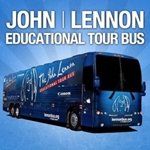
Yoko Ono Lennon has announced the return to NYC of the John Lennon Educational Tour Bus (LennonBus.org), the non-profit 501(c)(3) mobile music and video production studio, for a month-long tour September 15 - October 14.
Entitled Come Together: NYC, this year's residency, the fourth annual, takes the state-of-the-art Lennon Bus studios to schools and public events across the city where students, visitors and guest mentors will create original music, videos, poetry, photos, and art. Throughout the month, the Lennon Bus will also be working with schools using a new curriculum entitled Come Together, powered by Nearpod which is designed to get students engaged in discussions and creative activities around peace.
Source:Broadwayworld.com
details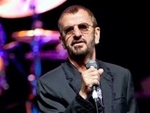
Ringo Starr, "Give More Love" (UMe)
We're on the road again with the skiffle band king, Ringo Starr. The busiest of all Beatles is out with his 19th solo album, "Give More Love," featuring a who's-who of rock greats as supporting cast.
Starr says he has more energy now than he did 25 years ago. It shows out of the gate with "We're On The Road Again," a fun track with Sir Paul McCartney holding court on bass while an energized Starr sings about gigging and moving on down the road. Toto's Steve Lukather delivers the real punch here with some tight guitar work.
"Laughable," is another solid track. Peter Frampton co-wrote it and folds in his signature soaring guitar. "Electricity" is also one of the top songs on the 14-track "Give more Love." It's a medium paced bluesy jaunt, co-written by hit machine Glen Ballard and starring Joe Walsh on guitar and Don Was of Was (Not Was) on bass. Dare I say Starr is the weak link on this one?
Source: The Miami Herald
details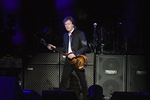
The long and winding road took Paul McCartney back to Madison Square Garden, where the Beatles legend proved he hasn’t lost a bit of his magic.
Performing his first full concert at the famed New York City arena since 2005, McCartney, 75, captivated the sold-out audience with a blend of Fab Four classics, his biggest Wings hits and even a few contemporary numbers.
And if that wasn’t enough, McCartney closed out the three-hour, 40-song performance by bringing Bruce Springsteen onstage during his encore in what was one of the major highlights of the night.
Clearly, it was worth the 12-year wait.
McCartney got the mostly adult audience on its feet and rocking from the get-go, kicking things off with a Beatles hit, “A Hard Day’s Night,” before running through fan favorites like “Can’t Buy Me Love,” “Jet” and “All My Loving” early on in the set.
“Good evening, New York City,” McCartney proclaimed to the cheering crowd two songs in. “It’s so good to be back!”
Source: Daily News

RINGO Starr’s support for Brexit helps complete a potential Leave-backing supergroup which would include musical legends like The Who frontman Roger Daltrey and Morrissey.
With the Beatles hero on drums, The Sun has mocked up a dream line-up including Muse guitarist Matt Bellamy and Canadian music superstar Bryan Adams.
Ringo Starr's support for Brexit completes a Leave line-up of music stars
Ringo urged politicians to “get on” with quitting EU and says Brexit is a ”great move”, adding it was crazy that people were suddenly questioning what should happen.
And he told the BBC that Brexit was the right decision as it meant being “in control of your own country”.
He revealed he backed Brexit last year because the European Union was a “shambles”, adding: “I think it’s a great move.”
But the 77-year-old joked: “But don’t tell Bob Geldof!”
Source: The Sun
details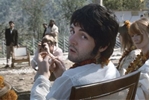
Paul Saltzman was stoned—not on drugs, but on inner peace—as he sat cross-legged in an ashram bungalow in northern India. It was 1968, and across the room his new friend, the 24-year-old Beatles guitarist George Harrison, set down his sitar and the two of them talked about meditation, fame, and finding bliss within and without.
At the time, Saltzman was a 24-year-old documentary filmmaker from Canada. He had never imagined when he set out for India that he would find the world’s greatest band holed up in the very ashram to which he, too, was drawn. Eventually, John Lennon and Paul McCartney would invite him to join their entourage at a long table on a cliff overlooking the Ganges river in the foothills of the Himalayas. He’d hang with Harrison in his room as he practiced sitar.
Source:Patrick Scott
details

This Friday, Washington, D.C.’s Union Market will debut a brand new large-scale mural along 6th Street NE, completed by Yoko Ono.
The Northeast market partnered with the Hirshhorn Museum and Sculpture Garden to complete the project. The mural is the inaugural project of Hirshhorn in the City, an initiative that hopes to exhibit international contemporary artists across Washington, D.C.
According to a press release, “Ono’s new work, ‘RELAX. YOUR HEART IS STRONGER THAN WHAT YOU THINK!’ compels us to step outside of our everyday lives and consider the power of the heart over the restrictions of the mind.”
In a statement, Ono said that her inspiration for the work was that she hopes that “our hearts will be stronger and stronger forever.”
As part of the new mural, Hirshhorn Curator of Media and Performance Art Mark Beasley will lead educational discussions on Ono’s work at Union Market.
Source: Michelle Goldchain
details
"Magical Mystery Tour" by The Beatles.
When many of us hear the words “Magical Mystery Tour” we think of The Beatles’ quirky and critically panned film.
True, the 1967 film, created for BBC Television, is not the best example of the band’s genius. It’s almost unfortunate that it has to be associated with its soundtrack because the music is actually quite good. While it’s rarely listed among the band’s top albums, “Magical Mystery Tour” is certainly up there with The Beatles’ best work.
And like "Sgt. Pepper's Lonely Hearts Club Band," it is also celebrating a 50th anniversary this year.
“While it’s rarely listed among the band’s top albums, 'Magical Mystery Tour' is certainly up there with The Beatles’ best work.”
Source: The Spectrum
details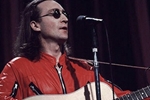
In 1975, John Lennon retired from live performance after his son Sean was born. What followed was, for him, five years of domestic bliss in his New York mansion, The Dakota, centred around being a full-time father and showering his new child with such love and devotion that he had never shown his first son, Julian.
But before he could settle down into a cycle of serenity that he’d never previously been able to enjoy, Lennon a few professional obligations to fulfil – one being what turned out to be his final live performance ever.
John Lennon final performance.
Source: hhhhappy.com
details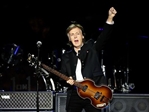
Paul McCartney performs on stage at Prudential Center, Newark. Monday, September 11, 2017.(Photo: Noah K. Murray)
Paul McCartney took back 9/11 with a night of life-affirming music, underscored with peace and love.
“We’re going to dedicate this show to all the people who were involved in what happened 16 years ago today.” said McCartney during his Monday, Sept. 11 show at the Prudential Center in Newark.. “We want people to know we are against oppression, prejudice and violence and we want people to know that we are for friendship and freedom.”
McCartney’s music can do that. It’s full of powerful peace and love vibes, framed by exquisite melodies and presented with an eternal optimism. McCartney, 75, sprinkled the crowd with Beatles magic and the hope that a three-minute rock song can change the world.
Source: Chris Jordan
details